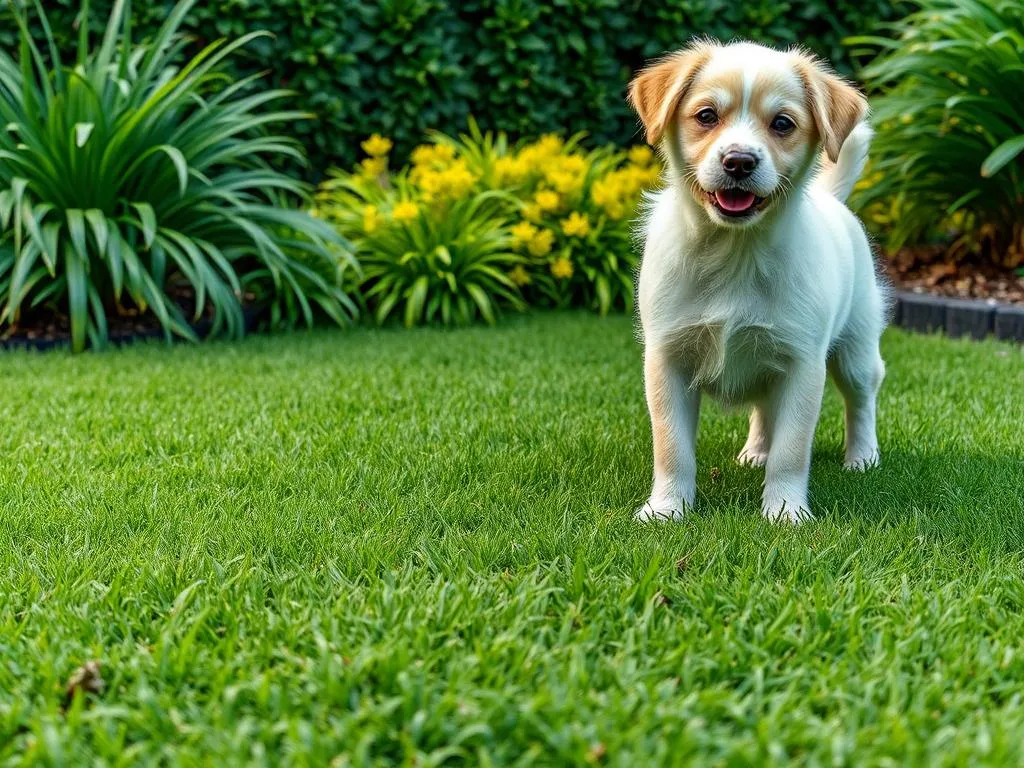
Introduction
As more and more dog owners seek ways to create the perfect outdoor space for their furry friends, artificial grass for dogs has surged in popularity. This innovative solution offers a lush, green area that is both durable and easy to maintain, making it an ideal choice for pet owners. Creating a dog-friendly environment is essential, not just for the aesthetic appeal of your yard but also for the health and happiness of your beloved pets. In this comprehensive guide, we will explore the benefits of artificial grass, how to install it, maintain it, and address common concerns associated with this popular choice.
Understanding Artificial Grass
What is Artificial Grass?
Artificial grass is a synthetic surface made from polyethylene, polypropylene, or nylon fibers designed to mimic the look and feel of natural grass. Unlike natural grass, which requires regular maintenance, artificial grass offers a low-maintenance alternative that can withstand heavy foot traffic, making it particularly suitable for households with dogs.
Types of Artificial Grass
When considering artificial grass for dogs, it’s important to understand the different types available:
-
Standard Turf: This type is suitable for general use and is often more affordable. However, it may not provide specialized features for pets.
-
Pet-Specific Turf: Designed specifically for pets, this turf often includes enhanced drainage systems and is made from non-toxic materials to ensure the safety of your dogs.
-
Eco-Friendly Options: These types are made from recycled materials and are designed to minimize environmental impact while providing a safe space for pets.
Benefits of Artificial Grass for Dogs
Health Benefits
One of the significant advantages of artificial grass for dogs is its ability to reduce the risk of parasites and allergens. Natural grass can harbor fleas, ticks, and other pests that can affect your dog’s health. Moreover, artificial grass offers superior drainage properties, which help prevent the buildup of bacteria and odors, promoting a cleaner and healthier environment for your pets.
Durability and Maintenance
Artificial grass requires much less maintenance than natural grass. While natural grass needs regular mowing, watering, and fertilizing, artificial grass only requires occasional rinsing and brushing. Furthermore, it is designed to withstand the wear and tear caused by dogs running, digging, and playing, ensuring it remains looking good for years to come.
Aesthetic Appeal
Available in a variety of designs and colors, artificial grass for dogs can enhance the overall aesthetic of your outdoor space. It can complement your landscaping and provide a vibrant, green area for your pets to enjoy, regardless of the season.
Installing Artificial Grass for Dogs
Preparation for Installation
Before installation, it’s crucial to measure and plan the area where you want to lay down artificial grass. Take into account the amount of sunlight the area gets, as this can affect the type of turf you choose. Additionally, selecting the right type of artificial grass is important; pet-specific turf might be the best choice if you have multiple dogs or if your pet is particularly active.
Installation Process
If you opt for a DIY approach, follow these steps for a successful installation:
- Clear the Area: Remove any existing grass, rocks, or debris.
- Level the Surface: Use a rake to create a smooth, even surface.
- Add a Base Layer: Lay down a base layer of crushed stone or decomposed granite to improve drainage.
- Roll Out the Turf: Lay the artificial grass over the prepared area, ensuring it fits snugly.
- Secure the Edges: Use landscape staples to secure the edges of the turf.
- Infill and Brush: Add infill material (if required) for stability and brush the grass to ensure the fibers stand upright.
If you prefer to hire a professional, look for experienced installers who specialize in pet-friendly turf and assess the cost based on your specific needs.
Safety Considerations
Safety should always be a priority when installing artificial grass for dogs. Ensure that the materials used are non-toxic and safe for pets. Additionally, proper drainage and ventilation are essential to prevent moisture buildup, which can lead to unpleasant odors and health risks.
Maintenance of Artificial Grass
Cleaning and Sanitizing
To keep your artificial grass hygienic, regular cleaning is necessary. Here are some routine tips:
- Rinse Regularly: Use a garden hose to rinse off dirt, debris, and pet waste.
- Remove Solid Waste: Pick up any solid waste promptly to prevent odors.
- Use Pet-Friendly Cleaners: Opt for cleaning products specifically designed for pet areas to avoid any harmful chemicals.
Managing Odors
Even with regular cleaning, you may encounter odors from time to time. Here are techniques to minimize and eliminate them:
- Vinegar Solution: A mixture of vinegar and water can help neutralize odors.
- Baking Soda: Sprinkle baking soda on the turf to absorb smells and then rinse it off.
- Regular Maintenance: Adhering to a consistent cleaning schedule will prevent odor buildup.
Seasonal Care
Different seasons will require unique maintenance strategies:
- Summer: Keep your artificial grass cool by rinsing it regularly and providing shaded areas if possible.
- Winter: For snowy climates, gently remove snow with a shovel. Avoid using salt or ice melt, as these can damage the turf.
Common Concerns and Misconceptions
Heat Retention
A common concern among dog owners is that artificial grass becomes too hot in direct sunlight. To address this:
- Choose Lighter Colors: Opt for lighter shades of turf that absorb less heat.
- Install Shade Structures: Consider adding umbrellas or shade sails to cool down the area.
Environmental Impact
Many pet owners worry about the environmental impact of artificial grass. Fortunately, eco-friendly options are available, made from recycled materials. Additionally, the longevity of artificial grass and its low maintenance requirements can contribute to reduced environmental footprint over time.
Cost Analysis
When evaluating the cost of artificial grass for dogs, consider both the initial investment and long-term savings:
- Initial Costs: Installation can be more expensive upfront compared to natural grass.
- Long-Term Savings: Reduced maintenance, water bills, and the absence of lawn care services can lead to significant savings over time.
Real-Life Experiences
Case Studies
Testimonials from dog owners who have installed artificial grass can provide valuable insights. Many report that their dogs enjoy the new space and that upkeep has become much more manageable. Owners of multiple pets appreciate the durability and ease of cleaning, often expressing satisfaction with their decision to switch to artificial turf.
Expert Opinions
Veterinarians and pet trainers often weigh in on the benefits of artificial grass for dogs. They highlight its safety, hygiene, and the positive effects it can have on a dog’s well-being, particularly for those with allergies or sensitivities.
Conclusion
In summary, artificial grass for dogs presents a myriad of benefits, from improved health and hygiene to reduced maintenance and enhanced aesthetics. While there are considerations to keep in mind, such as heat retention and initial investment, many dog owners find that the advantages far outweigh the drawbacks. We encourage you to explore your options and weigh the pros and cons based on your specific situation to determine if artificial grass is the right choice for your pet-friendly space.









